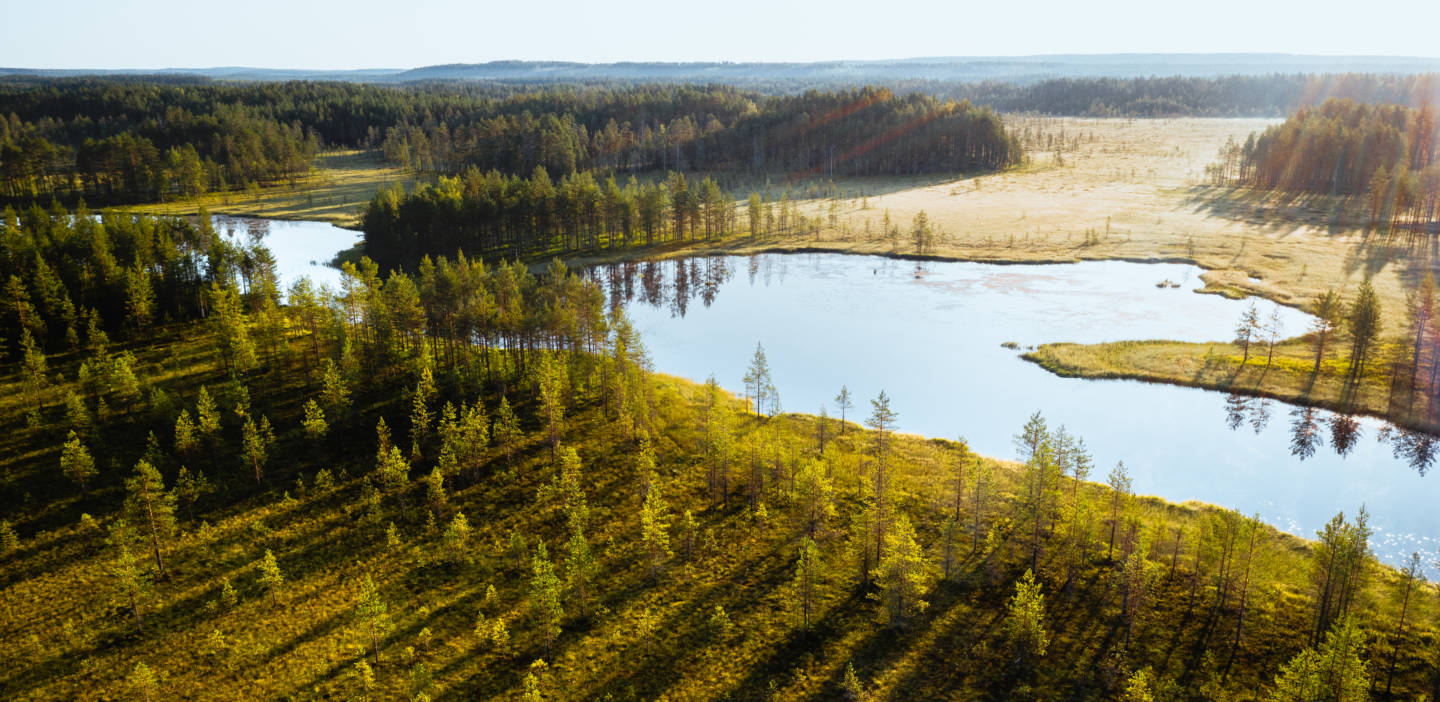
Mires
Mires are the second most common environment type in Finland. In total, there are just under nine million hectares of mires, which represents 20% of Finland's total surface area and 28% of its land area. Out of all known species in Finland the proportion of species that use mires as their primary environment is about 4%. This is considerably less than what one might expect based on the proportion of mire land area.
Mire indicators
Finland has a special responsibility for mires
Overall, mires have relatively few species. On the other hand, wooded mires – especially spruce mires – have many species whose primary environment is forests. Many forest species also use treeless bogs as part of their living area. Finland has a special responsibility for the protection of mire species and their habitats, as Finland is proportionally the most mire-rich country in the world.
Of Finland’s mires, 19% are open fens, 55% are pine mires, and 26% are spruce mires. The proportion of treeless open mires in the southern part of the country is only about a quarter of what it is in Northern Finland. Nutrient-rich herb-rich mires remain in small numbers across the country, accounting for less than two percent of the total mire area. Of the well-known species, 19% are associated with fens, 17% with herb-rich mires, 26% with pine mires, and 23% with spruce mires. Given their small area, herb-rich mires are clearly the most species-rich mire habitats. The highest proportion of mire species are among mosses and vascular plants.
Mire environments are defined by a layer of peat
In this context, by mires we mean all habitats covered by a peat layer or where the proportion of mire vegetation in the surface vegetation is at least 75%. According to this classification, spruce mires, for instance, are mires and not forests, even though they can have robust tree growth. In reality, a complete continuum exists between forests and mires, and drawing a line between them is always somewhat artificial. From a biodiversity perspective, considering swamp forests in the context of mires is justified given that their condition has greatly changed due to extensive ditching.
The highest proportion of mires is in the western part of Northern Ostrobothnia, where they cover nearly half of the land area. There are also many mires in Southern Lapland, Northeastern Finland, Kainuu, Ostrobothnia, and North Karelia. In the southernmost parts of Finland, there were originally the fewest mires, but there the draining of mires for agriculture and forestry use has been the most common.